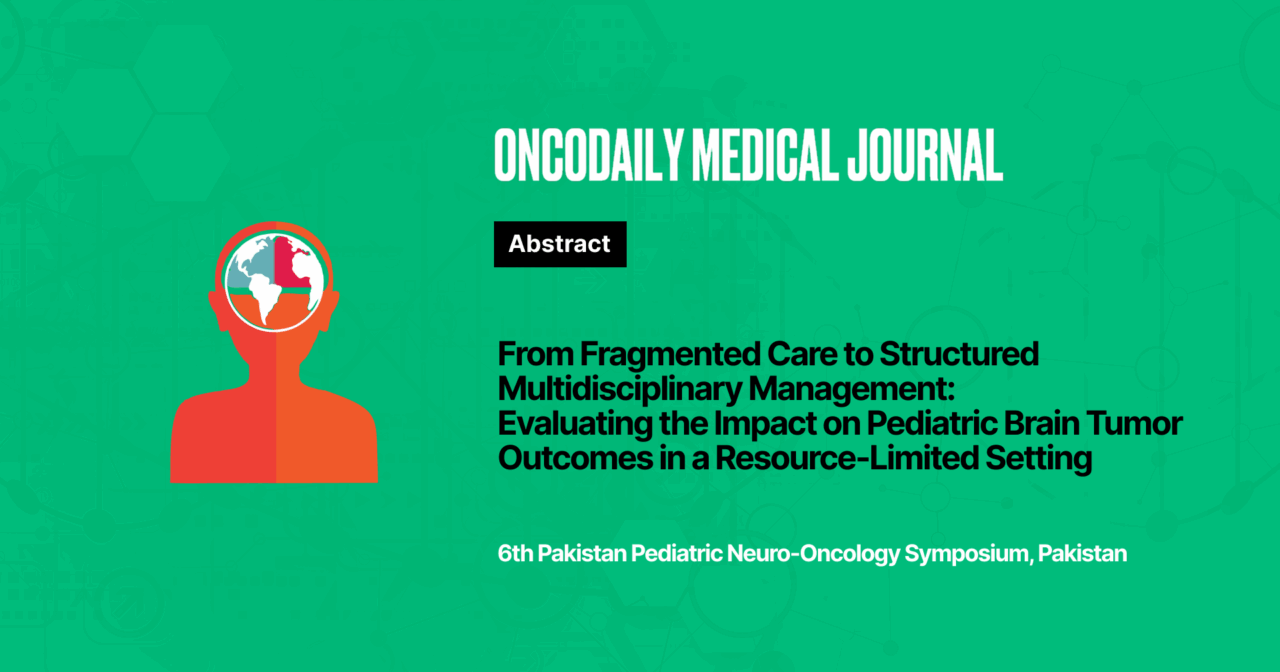From Fragmented Care to Structured Multidisciplinary Management: Evaluating the Impact on Pediatric Brain Tumor Outcomes in a Resource-Limited Setting
Abstract
Introduction: Pediatric brain tumors (PBT) represent a significant challenge in low and middle-income countries (LMICs) due to limited resources. This study evaluates the impact of establishing dedicated pediatric neuro-oncology multidisciplinary team (PNO-MDT) on treatment practices and survival outcomes at a tertiary care center in Pakistan.
Methodology: This retrospective analysis compared outcomes associated with Pediatric Brain Tumor cases at Aga Khan University Hospital, Karachi, between 2015-2024 versus 2004-2014 cohort. We included all patients aged ≤18 years with radiologically or histopathologically confirmed CNS tumors according to the WHO Classification and discussed in PNO-MDT. Multivariate Cox regression analyzed prognostic factors.
Results: Cohort of 652 patients were included in the final study from 2015-2024 and 175 from 2004-2014. The most common tumors were low-grade gliomas (23.2%), medulloblastomas (15.2%), and high-grade gliomas (12.7%). For post-PNO-MDT cohort, multidisciplinary team involvement occurred in 88.1% of cases. Median follow-up was 4.86 months, with 52.5% of post- PNO-MDT patients followed longer than one year compared to 17.1% pre-PNO-MDT. Treatment compliance significantly improved in the post-PNO-MDT cohort, with surgical intervention increasing from 78.9% to 87.4%.
Loss to follow-up decreased from 50% pre-PNO-MDT to 10.9% post-PNO-MDT implementation. Multivariate analysis identified significant prognostic factors: low-grade gliomas (HR=0.08, p<0.001), supratentorial location (HR=0.28, p<0.001), and ages 3-14 years (HR=0.45, p=0.019). Tumor board discussion improved survival (81.7% vs 69.4%, p=0.024). Survival outcomes showed improvement with 59.2% alive post- PNO-MDT compared to 19.9% pre- PNO-MDT, though mortality rates were 29.9% and 24%, respectively.
Conclusion: The implementation of PNO-MDT had a significant positive impact on patient outcomes. It led to increased pediatric tumor diagnosis and enhanced treatment compliance. Additionally, the structured and coordinated approach of the PNO-MDT effectively reduced loss to follow-up rates and substantially improved overall survival.
Conflict of Interest: None
Funding: None
Disclosure statement: None
License: This article is published under the terms of the Creative Commons Attribution 4.0 International License (CC BY 4.0).
©️ Naureen Mushtaq, 2025. This license permits unrestricted use, distribution, and reproduction in any medium, provided the original author and source are credited.





